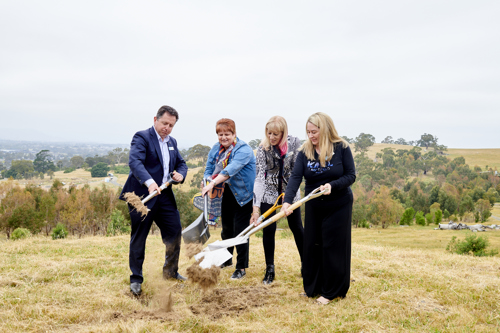-
About Us
- Advocacy Priorities
- Careers at Council
- Contact Us
- Council
- Have your say
- Local laws and legislation
-
Major Council projects
- Aboriginal Gathering Place
- Doreen Dirt Jumps
- Findon Road extension
- Granite Hills Major Community Park
- HR Uren Recreation Reserve redevelopment
- Kelynack Recreation Reserve upgrades
- Kirrip Community Centre Library Hub
- Mernda Adventure Park precinct
- Mernda Library
- Mernda Social Support Centre
- Mill Park Stadium
- Murnong Community Centre
- Norris Bank Reserve upgrade
- Peter Hopper Lake revitalisation
- Plenty Road-Everton Drive intersection
- Quarry Hills Connecting Trails
- Redleap Recreation Reserve
- Regional Sports Precinct in Mernda
- Riverside Reserve redevelopment
- Tramoo Street shopping precinct upgrade
- Whittlesea Park Master Plan
- Whittlesea Public Gardens redevelopment
- Whittlesea skate park and BMX track upgrade
- Wollert Church relocation and restoration
- News & Publications
- Our city
- Rates
-
Waste & Environment
-
Bins & waste
- A-Z guide to waste and recycling
- Bin collections
- Braille bin stickers
- Bundled branch collection
- Cancel your extra bin
- Container Deposit Scheme
- Damaged bin repair or replacement bins
- E-waste
- Food and garden waste bin
- Food waste recycling
- Glass recycling
- Hard rubbish collection
- Needle and syringe disposal
- Order new bins
- Order extra bins
- Report dumped rubbish and litter
- Rethinking Waste Plan 2021-2030
- Waste and recycling facilities
- Living Green
- Stormwater and rainwater
-
Trees and plants
- Grass maintenance
- Maintenance of trees in nature strips and parks
- Mowing and slashing land
- Nature Strip Trees
- Overhanging branches on roads and footpaths
- Pruning or removing a tree on private property
- River Red Gum Tree Protection Policy
- Street Tree Management Plan
- Street Trees
- Greening Whittlesea - City Forest Strategy 2020-2040
- Rural land management
- Towards a net zero and climate-resilient future
-
Bins & waste
-
Building, Planning & Development
-
Building and construction approvals
- Apply for certificates, plans and property information
- Asset protection permit
- Community infrastructure levy
- Development, infrastructure and open space contributions to local suburbs
- Download a building form
- Hoarding permit for building works
- How to apply for a building permit
- Infrastructure protection permit
- Other building matters to consider
- Submit an online building request
- Swimming pool, spas and safety barrier regulations
- When you need a building permit
- Works in road reserve permit
- Difference between planning and building
- Development plans
-
Planning
- Advertising
- Do I require a planning permit?
- Environmentally Sustainable Development (ESD)
- Have your planning permit fast tracked
- Making changes to your heritage property
- Planning for Biodiversity Policy
- Planning permit process
- Planning services & online forms
- Planning fees
- Site Environmental Management Plan
- Subdivisions
- What is planning?
- Planning Scheme and Amendments
- Guidelines and Standard Drawings
-
Building and construction approvals
-
Community Support
- Aboriginal community
-
Children and families
- Child Safety
- Childcare centres
- Children with additional needs
- Family Day Care
- Family violence support service information
- Immunisation for babies and children
- Kindergarten applications
- Maternal and child health services
- Modelling Respect and Equality Program (MoRE)
- Playgroups
- Primary schools
- School holiday care
- Secondary schools
- Training and education for parents, carers and professionals supporting families
- Victorian Child Friendly Cities and Communities Charter
- Kindergarten Application Help Sessions
- Nature Play
- Citizenship & Multicultural Services
- City Safety and Amenity permits
- Financial Wellbeing booklet
- Love Where We Live
- Fundraising permits
- Grants, awards and competitions
- Information for community groups
- People with disability
- Pets and animals
- Seniors and aged
- Support, financial hardship and emergency relief services
- Volunteering
- Young people (aged 10-25)
- Parking, Roads & Footpaths
- Health & Safety
-
Arts, Events & Recreation
- Active Whittlesea
- Community buses for hire
- Community gardens
- Libraries and neighbourhood houses
- Organising an event
- Parks and playgrounds
-
Sports facilities and clubs
- Book a sports ground
- Epping Soccer Stadium
- Find local sport and leisure clubs
- Find your local tennis club
- Football and cricket ovals for public use
- GE3 - Challenging gender stereotypes in sport
- Meadowglen International Athletics Stadium
- Mill Park Basketball and Netball Stadium
- Skate parks and BMX tracks
- Soccer pitches for public use
- Swimming pools and leisure centres
- Tennis and basketball courts for public use
- Things to see and do
- Venues for hire
-
For Business
- Investing in Whittlesea
- Operating a business
-
Starting a business
- Business Permits overview
- Business permits self-assessment checklist
- Buying or selling a food, public health or accommodation business
- Extend your footpath trading zone
- Footpath trading permit
- Market stalls and food trucks
- Shared housing requirements
- Social Enterprises
- Starting a business
- Starting a food business
- Starting a public health or accommodation business
- Types of food and health business we monitor
- Support for business
- Tenders
Aboriginal Gathering Place
The City of Whittlesea is planning to build an Aboriginal Gathering Place in the heart of Quarry Hills Parkland in South Morang.
Our vision
The City of Whittlesea’s vision is to create a welcoming, inclusive and culturally safe space where all Aboriginal people have a sense of belonging and have access to activities, programs and services that strengthen culture and enhance wellbeing.
The Aboriginal Gathering Place will also support educational services to the wider community to foster reconciliation and community healing.
About the Aboriginal Gathering Place
The City of Whittlesea is committed to reconciliation and supporting opportunities for improved cultural, social and health outcomes for local Aboriginal people and communities.
The Aboriginal Gathering Place will be a welcoming, inclusive and culturally safe space where Aboriginal people can enjoy a sense of belonging, with access to programs and services that strengthen culture and wellbeing.
There are approximately 14 Gathering Places in Victoria. This space will be the first of its kind in the City of Whittlesea.
The Aboriginal Gathering Place will be located on Wurundjeri Country within the Quarry Hills Parkland in South Morang, creating an invaluable connection with the landscape, including local flora and fauna, and picturesque views east towards the Yarra Ranges.
The location and design of the Aboriginal Gathering Place has been established through collaboration and consultation with the Whittlesea Aboriginal Gathering Place Advisory Group.
Objectives
The Aboriginal Gathering Place has been co-designed with the Whittlesea Aboriginal Gathering Place Advisory Group to:
- Improve the health and wellbeing of Aboriginal communities
- Provide a safe and inclusive space to connect
- Support the sharing of knowledge
- Empower people through social and cultural activities
- Foster reconciliation and healing
- Improve access, equity and opportunity
Major milestone
In November 2023, the City of Whittlesea's administrators were joined by local Aboriginal leaders to turn the first sod on the Aboriginal Gathering Place.
The Aboriginal Gathering Place is a key part of Council's commitment to reconciliation and self-determination for Aboriginal and Torres Strait Islander people.
Establishing a place to promote cultural practices and knowledge-sharing has been a policy priority for Council, the Whittlesea Reconciliation Group and Whittlesea Aboriginal Gathering Place Advisory Group for many years.
Frequently Asked Questions
+ What is an Aboriginal Gathering Place?
An Aboriginal Gathering Place provides a culturally safe and inclusive space for Aboriginal and Torres Strait Islanders to come together to feel socially and culturally connected to community.
It supports and facilitates a variety of cultural activities and programs that incorporate art, music, language and storytelling that strengthen culture and enhance wellbeing.
The Aboriginal Gathering Place will cater for all ages and all abilities.
It will be a space designed to incorporate reconciliation, truth telling and educational services to the wider community to foster reconciliation and community healing.
+ Where will the Aboriginal Gathering Place be located?
The Aboriginal Gathering Place will be located in the Quarry Hills Regional Parkland in South Morang.
The hills and ridges are rich in Aboriginal cultural heritage, with the parkland used as an east-west and north-south movement corridor.
The site's relative remoteness offers compelling open views east towards the Yarra Ranges and the presence of local flora and fauna help to connect this place with country.
Minimal topographical change is proposed in order to maintain the integrity of soil composition and enhance the local native flora to reaffirm the site's already strong connection to country.
+ Why is an Aboriginal Gathering Place needed?
The City of Whittlesea's Aboriginal and Torres Strait Islander population is the third largest within Melbourne and its surrounding suburbs, and has grown 38 per cent since the 2016 census.
Aboriginal people living in the City of Whittlesea have limited local access to culturally appropriate services that respond to their immediate and long-term cultural needs.
While about 14 Aboriginal Gathering Places exist across Victoria, currently there is no stand-alone Aboriginal community-controlled gathering place programming in the northern metropolitan region.
Aboriginal people are 2.7 times more likely to feel high or very high levels of psychological distress. Additionally, life expectancy is about 10 years less and hospitalisation rates for circulatory disease are almost twice as high than for non-Indigenous people.
An Aboriginal Gathering Place is critical to improving the complex health and wellbeing deficits faced by our Aboriginal community.
The benefits of an Aboriginal Gathering Place include:
- Increased sense of belonging and connection to culture
- Increased self-determination
- Increased health and wellbeing outcomes
- Increased mainstream awareness and valuing of Aboriginal culture
- Increased opportunities for reconciliation activities between Aboriginal and non-Aboriginal people
+ What consultation has been done on this project?
The City of Whittlesea consulted with more than 67 community members and the Whittlesea Reconciliation Group in compiling its 2018 feasibility study.
The Whittlesea Aboriginal Gathering Place Advisory Group (formerly the Aboriginal Gathering Place Governance Group) has met on more than a dozen occasions since 2021 to workshop project needs and refine the community vision, operating model and governance model.
Preliminary discussions have been undertaken with subject matter experts from government departments, Aboriginal Victoria and the Whittlesea Reconciliation Group to establish relationships and seek advice on partnership and funding opportunities and planning requirements.
Initial discussions have also been undertaken to ensure this project aligns with the Victorian Government's policy commitment to gathering places and self-determination, including the Korin Korin Balit-Djak policy, Treaty process and the Truth and Reconciliation Commission for Aboriginal Australians.
Consultation with the local Aboriginal community and the broader community will continue during the project's design and delivery phases.
+ What services will the Aboriginal Gathering Place offer?
The gathering place will offer a combination of regular, structured and planned activities, as well as unplanned activities, such as:
- Cultural strengthening and knowledge through arts, language, dancing, woodwork and other crafts, healing programs and storytelling
- Aboriginal cultural events and observance of days of cultural significance, including Sorry Day and NAIDOC Week
- Men, women and Elder-specific programs
- Sports and recreation programs and activities for people of all ages
- Youth programs such as homework clubs, afterschool programs and life skills workshops
- Aboriginal-focused meetings such as the Whittlesea Reconciliation Group and Local Aboriginal Network
+ What will the Aboriginal Gathering Place cost to build and how will it be funded?
The expected capital cost of the Aboriginal Gathering Place is estimated at $10 million.
Council will continue to advocate to the State and Federal Governments to support this invaluable initiative.
+ How does an Aboriginal Gathering Place fit with other plans for the site?
The Quarry Hills Regional Parkland has been identified as the ideal location to establish the Aboriginal Gathering Place.
In November 2022, the City of Whittlesea released a draft Quarry Hills Regional Parkland Future Directions Plan developed in partnership with the Wurundjeri Woi-wurrung Cultural Heritage Aboriginal Corporation - outlining a long-term vision for the area.
This vision includes the Aboriginal Gathering Place and plans for the Granite Hills Major Community Park.
+ When will the Aboriginal Gathering Place open?
Construction is expected to start in early 2024, with the facility expected to open in 2025, subject to funding.
How will the Aboriginal Gathering Place affect local flora and fauna?
Minimal topographical change is proposed for the construction of the Aboriginal Gathering Place to maintain the integrity of soil composition and local native flora.
The building has been designed to consider the impacts to the natural landscape, including the retention of several significant manna gums.
The existing road network, shed and depot areas all represent disturbed land. These areas will be rejuvenated to provide suitable access and convenient parking without the need for significant disturbance beyond the existing footprints.
NBN Node Artwork Partnership
In partnership with NBN Co, the City of Whittlesea is embracing our broadband infrastructure in cultural, beautiful and creative ways.
Delivering a series of public artworks across NBN node sites in the municipality and showcasing artwork from four First Nations artists, this public art series is done in connection with the City of Whittlesea’s Aboriginal Gathering Place. While the artworks brighten and visually enhance their surroundings, they also serve to raise awareness on the Aboriginal Gathering Place that is being delivered in Quarry Hills Parkland.
+ Learn more about the artwork and artists
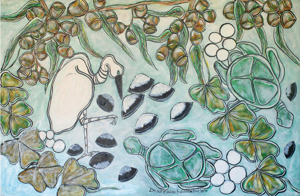 |
Louise Moore’s Food Sources of the River, a beautiful representation of the landscapes, waterways and rivers that were an integral part of her life. This is located across Mernda Village Community Centre (opposite 70 Mernda Village Drive, Mernda). |
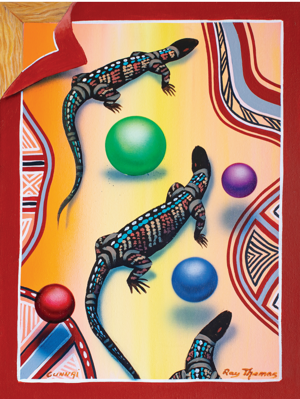 |
Ray Thomas’ work, Batatluk and Floating Spheres, is displayed near the Lakes Primary School in South Morang (151 The Great Eastern Way South Morang). Bataluk is from the Gunnai language from Gippsland meaning lizard. |
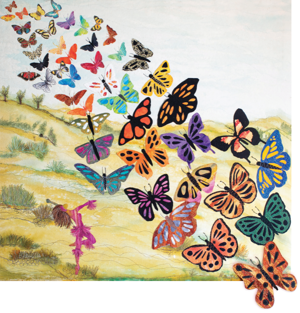 |
Marleen Scerri’s award-winning Freedom artwork in Mill Park (near 21 Oleander Drive), depicts the dancing lady, who is as free as the butterflies. |
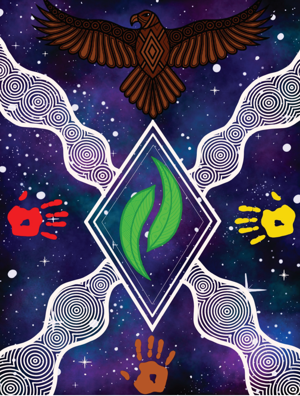 |
Ky-ya Nicholson Ward’s piece, titled Protection, is a poignant representation of Wurnundjeri culture, healing and protection incorporating a beautiful image of Bunjil the Wedge Tailed Eagle. This can be seen near the Stables Shopping Centre in Mill Park (at the intersection of Betula Ave and Childs Road, Mill Park). |
For more information about the NBN node artwork project and other participating Councils, visit: Rapt with art: transforming nodes into community artwork | nbn (nbnco.com.au)
Timeline
Concept/detailed design: Early 2024
Design available for community to view: Early 2024
Construction to begin: Mid 2024
Facility opens: 2025




